
Special Article - Tuberculosis Screening
Austin Tuberc Res Treat. 2017; 2(1): 1008.
Chest X-Ray Finding of Pulmonary Tuberculosis and Nontuberculous Mycobacterial Lung Diseases in Patients with Acid-Fast Bacilli Smear-Positive Sputum
Yuan MK1,2, Lai YC³, Chang CY4 and Chang SC3,5*
1Department of Radiology, Zuoying Branch of Kaohsiung Armed Forced General Hospital, Taiwan
2College of Health and Nursing, Meiho University, Taiwan
3Department of Internal Medicine, National Yang-Ming University Hospital, Taiwan
4Department of Internal Medicine, Far Eastern Memorial Hospital, Taiwan
5Department of Critical Care Medicine, National Yang- Ming University Hospital, Taiwan
*Corresponding author: Chang Shih-Chieh, Department of Internal Medicine, National Yang-Ming University Hospital, #152, Xin-Min Road, Yilan City 260, Taiwan
Received: September 20, 2017; Accepted: November 27, 2017; Published: December 06, 2017
Abstract
Aim: The early diagnosis of Pulmonary Tuberculosis (PTB) and nontuberculous mycobacterial lung diseases (NTM-LD) are important clinical issues. The present study aimed to compare and identify chest X-ray characteristics that help to distinguish NTM-LD from PTB in patients with Acid-Fast Bacilli (AFB) smear-positive sputum.
Methods: From January 2008 to April 2012, we received 578 AFB smearpositive sputum specimens. The typical chest X-ray findings of mycobacterial diseases such as pleural effusion and lesions, consolidation, cavity formation, reticulonodular infiltration, atelactasis, miliary nodules and honeycombing were analyzed.
Results: A total of 133 patients had proven PTB and 25 proven NTM-LD. Seventy two (72) patients with PTB (54.1%) had consolidation vs. 5 (20.0%) in patients with NTM (P = 0.002). Four (4) patients with NTM lung diseases (16.0%) had a honeycomb appearance vs. 5 (3.8%) patients with PTB; (P=0.036). Chest X-ray findings of consolidation was independently associated with patients with PTB (odds ratio [OR], 0.13). Presence of honeycombing was associated with patients with NTM-LD (OR, 13.44).
Conclusion: The chest X-ray distinction between NTM-LD and PTB in patients with AFB smear-positive sputum may help community radiologists and physicians to make the most likely diagnoses before definite culture results are obtained for reducing disease transmission in endemic areas.
Keywords: Consolidation; Honeycomb; Nontuberculous mycobacterial lung disease; Pulmonary tuberculosis
Introduction
The diagnosis and treatment of lung diseases caused by mycobacterial infections are very important clinical issues. Among mycobacterial diseases, Pulmonary Tuberculosis (PTB) is the major entity and approximately 10 million each year new cases have been noted worldwide [1,2]. Microscopic examination of sputum smears for Acid-Fast Bacilli (AFB) is widely used and is the most efficient procedure for the initial screening of pulmonary mycobacterial diseases. The presence of AFB in the stained sputum (AFB smear-positive) indicates a preliminary diagnosis of pulmonary mycobacterial infection. Isolation of mycobacterium tuberculosis from respiratory specimen is recommended in order to obtain a definitive diagnosis of PTB [3].
However, if the pulmonary mycobacterial infection is not clinically suspected, AFB smear test is not even done before a radiological examination. Otherwise, typical radiological findings of pulmonary mycobacterial diseases are not uncommon when radiologists are reading plain chest film from outpatient departments or health examination centers in endemic areas. Pulmonary tuberculosis is known for its infective potential and airborne transmission from infected patients. It is essential to make early diagnosis of tuberculosis and initiate effective isolation and treatment of the patients. From a public health point of view, it is reasonable to administer empirical anti-TB drugs in clinically suspect PTB patients with AFB smear-positive sputum. The positive AFB smear test may represent Mycobacterium tuberculosis, but it can also represent Non- Tuberculous Mycobacteria (NTM) [4,5,6]. NTM are ubiquitous organisms and its radiographic abnormalities and clinical symptoms change slowly as compared with PTB [7]. The prevalence of Non- Tuberculous Mycobacteria Lung Diseases (NTM-LD) has increased gradually, which has raised the concern of unnecessary adverse effects and the related costs of anti-TB drugs [8,9].
Therefore, it is of great importance to be familiar with the radiological features of both PTB and NTM infection in patients with pending laboratory results. Chest X-rays are helpful for a tentative diagnosis of pulmonary mycobacterial diseases before definite mycobacterial culture because of its great availability and short examination time. The aim of this study was to identify the most possible plain chest X-ray characteristics of pulmonary mycobacterial diseases that prompt early diagnose in screening and to differentiating NTM-LD from PTB infection to avoid unnecessary anti-TB drug usage in patients with AFB smear-positive sputum.
Materials and Methods
Patients
From January 2008 to April 2012, we received 541 AFB smearpositive sputum specimens from 258 patients at the laboratory of National Yang-Ming University Hospital (a 512-bed regional teaching hospital in Yilan, Taiwan). Of these 258 patients, 13 were lost to follow-up during treatment and were excluded from the study. A total of 133 patients had proven pulmonary TB, and 25 patients had proven NTM lung diseases. We retrospectively reviewed chest X-rays from these patients with AFB smear-positive sputum (Figure 1). The study was approved by the Institutional Review Boards of the National Yang-Ming University Hospital.
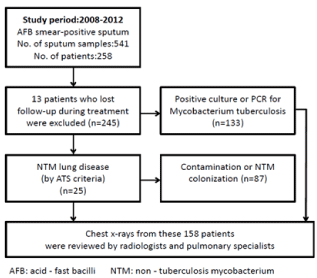
Figure 1: Flow diagram of study design.
Laboratory and chest X-ray diagnosis of pulmonary TB and NTM lung diseases
All of the sputum specimens were treated with Ziehl-Neelsen staining. TB Polymerase Chain Reaction (PCR) was performed with in-house IS6110-based PCR assays [10]. Mycobacterial cultures were performed using Löwenstein-Jensen medium [11]. Patients were diagnosed with pulmonary TB if M. tuberculosis was isolated from their sputum or bronchoalveolar lavage. NTM was diagnosed according to mycobacterial cultures and the American Thoracic Society (ATS) guideline [12].
All of the plain chest X-rays were originally obtained from each institution within 3 months of the AFB smear tests. The films were reviewed independently by 2 experienced radiologists and 2 pulmonary specialists blinded to the patient’s microbiology results. Thirteen patients with pre-existing lung diseases such as old TB and recurrent bronchiectasis were excluded in this study by previous film reading. None of the patients enrolled in this study had concomitant Human Immunodeficiency Virus (HIV) infection. Final decisions regarding the findings were determined by consensus. (Kappa value ranged from 0.67-0.82).
Statistical analysis
All statistical analyses were conducted using SPSS software for Windows (v 20; IBM Corporation, Armonk, NY, USA). Data are presented as frequencies for categorical variables, and by mean ± standard deviation for numerical variables. Categorical variables were compared using a chi-square test or Fisher’s exact test, and continuous variables were compared using an independent unpaired t-test. Univariate analysis was performed to evaluate the characteristic chest X-ray findings. P-values of less than 0.05 were considered to be statistically significant. Multivariate analysis was conducted using a logistic regression model to determine the independent predictor for PTB and NTM lung diseases. P values less than 0.05 were considered significant.
Results
The 133 patients with PTB included 104 men and 29 women with a mean age ± standard deviation of 66.8 years ± 17.5 (range, 23-91 years). Of the 25 patients with NTM 13 were men and 12 were women with a mean age ± standard deviation of 66.4 years ± 15.7 (range, 30- 89 years). The most frequently isolated NTM was M. avium complex (n=13) from sputum. Other pathogens included M. chelonae (n=4), M. gordonea (n=3) and M. xenopi (n=2) isolated from sputum and bronchoalveolar lavage. The clinical characteristics of these patients are summarized in Table 1.
The chest X-ray findings were classified as presence or absence of pleural effusion, pleural lesions, fibrothorax, cavity formation, atelactasis, area of consolidation, reticulonodular infiltration, mediastinal widening, miliary nodules and honeycombing. Of the 133 patients with PTB, 72 (54.1%) had consolidation vs. 5 (20.0%) in the 25 patients with NTM (P =0.002) (Figure 2, 3). Of the 25 patients with NTM lung diseases, 4 (16.0%) had honeycomb appearances vs. 5 (3.8%) patients with PTB; (P=0.036) (Figure 4). The frequencies with which pleural effusion and lesions, reticulonodular infiltration were seen in patients with PTB and in those with NTM were similar. Pleural effusion were present in 31 (23.3%) of the 133 patients with PTB and in 4 (16%) of the 25 patients with NTM. Reticulonodular infiltration were present in 116 (87.2%) of the 133 patients with PTB and in 20 (80%) of the 25 patients with NTM. Miliary nodules, cavities, atelactasis, fibrothorax and mediastinal widening were more common in PTB patients, but the univariate statistical results were not significant (Table 2). In multivariate analysis with age and sex controlled, chest X-ray findings of consolidation was independently associated with patients with diagnoses of PTB (odds ratio [OR], 0.13; 95% confidence interval [CI], 0.04-0.45). Presence of honeycombing was independently associated with patients with NTM lung diseases (OR, 13.44; 95% CI, 2.37-76.14) (Table 3).

Figure 2A: Chest X-ray of an 85-year-old male with pulmonary tuberculosis
demonstrates consolidation over the right lower lung zones.
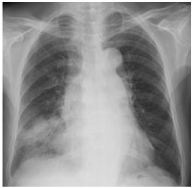
Figure 2b: Follow-up X-ray 3 days later of the patient demonstrated in figure
2a revealed progression of the consolidated area.
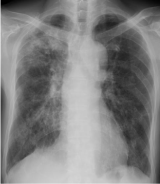
Figure 3a: Chest X-ray of a 79-year-old male with pulmonary tuberculosis
demonstrates consolidation at the right apical lung zones.

Figure 3b: Follow-up X-ray one year later of the patient demonstrated in
figure 4 reveals fibrosis of the previous consolidated area.
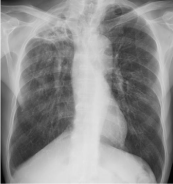
Figure 4a: Chest X-ray of a 78-year-old male with NTM (Mycobacterium
xenopi) lung disease demonstrates focal honey combing and fibrosis at right
apical lung zones.
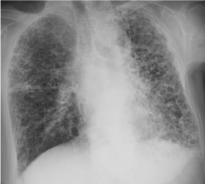
Figure 4b: Chest X-ray of an 89-year-old female with NTM (Mycobacterium
avium complex) lung disease demonstrates diffuse honeycomb appearances
at both lung fields.
Discussion
The present study shows that pulmonary TB and NTM lung diseases have their most possible radiological findings. Presence of consolidation is significantly associated with PTB, and honeycombing is independently associated with NTM lung diseases.
The definite diagnosis of PTB depends on PCR or mycobacterial culture from bronchial washing or sputum. Clinical symptoms and image findings also play important roles in the diagnosis of TB. Although thin-section Computed Tomography (CT) has been widely used in the past decades and CT findings are almost radiological gold standards for diagnoses of pulmonary mycobacterial infections [13,14,15], the current public awareness of CT radiation risk is also announced [16]. The diagnostic value of plain chest film still remains because its convenience and cheapness for initial screening of chest diseases. Characteristic radiological features of pulmonary TB include parenchymal diseases such as consolidation and cavities; pleural effusion, variable-sized nodules, reticulonodular infiltration and lymphadenopathy are well documented and repeatedly reviewed in literatures [17,18].
The chest X-ray findings of PTB in our study are mostly identical to the previously reported radiological findings of pulmonary mycobacterial disease. The pleural effusion and mediastinal lymphadenopathy are less common in our results as compared with CT findings in other reviews because these findings might be less apparent on plain chest film. Familiar radiological findings of nontuberculous mycobacterial infection include bronchiectasis, small and large nodules, reticulonodular infiltration, and fibrocavitary lesions [19,20]. Our study demonstrates these similar findings in patients with NTM lung diseases, but there are no significant differences as compared with the PTB patients. Only the frequency of honeycombing in NTM infection is significantly higher than those in PTB. To the best of our knowledge, the presence of honeycombing in NTM-LD has not been emphasized in the previous studies. Although honeycombing traditionally represents end-stage interstitial fibrosis, it is reported to be a dynamic process and may have different evolution [21,22]. In order to exclude the pre-existing honeycomb appearances, the previous films of the four patients with NTM-LD showing honeycombing were reviewed since the PACS (picture archiving communicating system) implementation in our institutions from March 2004.
Regarding the diagnosis of NTM, the isolation of NTM species from a respiratory sample is an insufficient evidence for the definite diagnosis of NTM lung disease. Some patients with positive NTM culture do not have evidence of pulmonary disease, and such infection may indicate colonization or transient infection. Therefore, the ATS (American Thoracic Society) issued diagnostic criteria for NTM lung diseases which not only rely on microbiological examinations, the clinical and radiographic evidences are also essential. Clinical research has shown that disease attributable to NTM has a rising trend in many developed and developing countries [23,24]. In endemic areas, immediate and empirical treatment of mycobacterial diseases based on the result of AFB sputum smear has an important impact on disease transmission control. However, the administration of unnecessary empiric anti-TB treatment is not uncommon in real world practice and patients might suffer from the adverse effects of anti-TB drugs. Our colleagues (Chang, et al. 2013) issued an article that revealed 40.4% of patients with positive sputum AFB stains did not have pulmonary TB in Taiwan [25]. According to Chang’s results, among patients who had positive sputum AFB stains without pulmonary TB, 25.8% were prescribed anti-TB treatment and 44% of them developed various adverse effects (hepatitis: 32%; skin rash: 20%). Although the adverse effects were usually not lethal, they did cause unnecessary harm. Our study provides radiographic evidence that honeycomb appearance is statistically an indicator of NTM disease in patients with AFB smear-positive sputum. This characteristic feature is helpful for us to distinguish NTM from PTB in patients with equivocal clinical symptoms and pending culture results. Considering our results, physicians should be able to make more precise decisions to initiate empiric anti-TB treatment and avoid unnecessary adverse effects regarding patients with final diagnoses of NTM lung diseases.
Our study had several limitations that are worth noting. There were only 158 patients with definite mycobacterial infection enrolled in this study. The conclusions drawn by our statistical results will require a large-scale analysis to be confirmed. The sensitivity and specificity of in-house IS6110-based PCR for Mycobacteria tuberculosis diagnosis were not satisfactory and false positive PCR results might confound our statistical confidence. In all cases, chest X-rays were obtained within 3 months of AFB smear tests. Some AFB smear-positive patients had received empirical anti-TB drugs. The radiological findings in patients with actual PTB diagnoses might show improvements and not exactly identical to the typical features of pulmonary TB.
Conclusion
In conclusion, this study provides a review of common chest X-ray finding of pulmonary mycobacterial infection. Our results suggest that pulmonary tuberculosis and NTM lung diseases in patients with AFB smear-positive sputum might be distinguished by assessing consolidation in patients with PTB and honeycombing with NTM. The radiological distinction between these two mycobacterial infections may help community radiologists and physicians to better understand the most likely diagnoses before definitive culture results are available and to deal with appropriate prescriptions for reducing disease transmission in endemic areas.
References
- World Health Organization. Global tuberculosis control: a short update to the 2016 report. World Health Organization 4.
- Donald PR, van Helden PD. The global burden of tuberculosis - combating drug resistance in difficult times. N Engl J Med. 2009; 360: 2393-2395.
- Blumberg HM, Burman WJ, Chaisson RE, Daley CL, Etkind SC, Friedman LN, et al. American Thoracic Society, Centers for Disease Control and Prevention and the Infectious Diseases Society. American Thoracic Society/ Centers for Disease Control and Prevention/Infectious Diseases Society of America: treatment of tuberculosis. Am J Respir Crit Care Med. 2003; 167: 603-662.
- Tuberculosis Division International Union Against Tuberculosis and Lung Disease. Tuberculosis bacteriology-priorities and indications in high prevalence countries: position of the technical staff of the Tuberculosis Division of the International Union Against Tuberculosis and Lung Disease. Int J Tuberc Lung Dis. 2005; 9: 355-361.
- Maiga M, Siddiqui S, Diallo S, Diarra B, Traoré B, Shea YR, et al. Failure to recognize nontuberculous mycobacteria leads to misdiagnosis of chronic pulmonary tuberculosis. PLoS One. 2012; 7: e36902.
- American Thoracic Society. Diagnostic standards and classification of tuberculosis in adults and children. Am J Respir Crit Care Med. 2000; 161: 1376-1395.
- Woodring JH, Vandiviere HM. Pulmonary disease caused by nontuberculous mycobacteria. J Thorac Imaging. 1990; 5: 64-76.
- Marras TK, Daley CL. Epidemiology of human pulmonary infection with nontuberculous mycobacteria. Clin Chest Med. 2002; 23: 553-567.
- Marras TK, Chedore P, Ying AM, Jamieson F. Isolation prevalence of pulmonary non-tuberculous mycobacteria in Ontario, 1997-2003. Thorax. 2007; 62: 661-666.
- Sun JR, Lee SY, Perng CL, Lu JJ. Detecting Mycobacterium tuberculosis in Bactec MGIT 960 cultures by inhouse IS6110-based PCR assay in routine clinical practice. J Formos Med Assoc. 2009; 108: 119-125.
- Tarshis MS, Kinsella PC, Parker MV. Blood media for the cultivation of Mycobacterium tuberculosis. VII. Comparison of blood agar-penicillin and Lowenstein-Jensen media under routine diagnostic conditions. J Bacteriol. 1953; 66: 448-452.
- Diagnosis and treatment of disease caused by nontuberculous mycobacteria. This official statement of the American Thoracic Society was approved by the Board of Directors, March 1997. Medical Section of the American Lung Association. Am J Respir Crit Care Med. 1997; 156: S1-S25.
- Jeong YJ, Lee KS, Koh WJ, Han J, Kim TS, Kwon OJ. Nontuberculous mycobacterial pulmonary infection in immunocompetent patients: comparison of thin-section CT and histopathologic findings. Radiology. 2004; 231: 880- 886.
- Griffith DE, Aksamit T, Brown-Elliott BA, Catanzaro A, Daley C, Gordin F, et al. An official ATS/IDSA statement: diagnosis, treatment, and prevention of non-tuberculous mycobacterial diseases. Am J Respir Crit Care Med.2007; 175: 367-416.
- Hollings NP, Wells AU, Wilson R, Hansell DM. Comparative appearances of non-tuberculous mycobacteria species: a CT study. Eur Radiol. 2002; 12: 2211-2217.
- Zondervan RL, Hahn PF, Sadow CA, Liu B, Lee SI. Body CT Scanning in Young Adults: Examination Indications, Patient Outcomes, and Risk of Radiation-induced Cancer. Radiology. 2013; 267: 460-469.
- Story A, Aldridge RW, Abubakar I, Stagg HR, Lipman M, Watson JM, et al. Active case finding for pulmonary tuberculosis using mobile digital chest radiography: an observational study. Int J Tuberc Lung Dis. 2012; 16: 1461- 1467.
- Mor Z, Leventhal A, Weiler-Ravell D, Peled N, Lerman Y. Chest radiography validity in screening pulmonary tuberculosis in immigrants from a high-burden country. Respir Care. 2012; 57: 1137-1144.
- Erasmus JJ, McAdams HP, Farrell MA, Patz EF Jr. Pulmonary nontuberculous mycobacterial infection: radiologic manifestations. Radiographics. 1999; 19: 1487-1505.
- El-Solh AA, Nopper J, Abdul-Khoudoud MR, Sherif SM, Aquilina AT, Grant BJ. Clinical and radiographic manifestations of uncommon pulmonary nontuberculous mycobacterial disease in AIDS patients. Chest. 1998; 114: 138-145.
- Lee HY, Lee KS, Jeong YJ, Hwang JH, Kim HJ, Chung MP, et al. Highresolution CT findings in fibrotic idiopathic interstitial pneumonias with little honeycombing: serial changes and prognostic implications. AJR. Am J Roentgenol. 2012; 199: 982-989.
- Mineo G, Ciccarese F, Attinà D, Di Scioscio V, Sciascia N, Bono L, et al. Natural history of honeycombing: follow-up of patients with idiopathic pulmonary fibrosis treated with single-lung transplantation. Radiol Med. 2013; 118: 40-50.
- Dailloux M, Abalain ML, Laurain C, Lebrun L, Loos-Ayav C, Lozniewski A, et al. Respiratory infections associated with nontuberculous mycobacteria in non-HIV patients. Eur Respir J. 2006; 28: 1211-1215.
- Fowler SJ, French J, Screaton NJ, Foweraker J, Condliffe A, Haworth CS, et al. Nontuberculous mycobacteria in bronchiectasis: prevalence and patient characteristics. Eur Respir J. 2006; 28: 1204-1210.
- Chang CY, Hong JY, Yuan MK, Chang SJ, Lee YM, Chang SC, et al. Risk factors in AFB smear-positive patients who receive inappropriate antituberculous treatment. Drug Des Devel Ther. 2013; 7: 53-58.